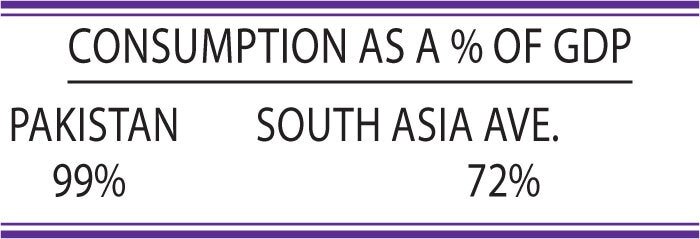The endangered Indus River dolphin is more than a victim of environmental destruction: it is a symbol of the profound ecological crisis that threatens us all.
“Bhulan toh humari saheliyan hain (Dolphins are our friends),” said Mai Soomeri, a native of Guddu town in Sindh. “When we are here fishing or washing dishes, they are always there.”
He insisted that these creatures were more than simply part of the Indus River ecosystem; They were their constant companions, offering them fun company and comfort in equal measure.
Soomeri is a member of the Bhulan Dost Programme, a flagship citizen science initiative led by the World Wide Fund for Nature Pakistan (WWF-P) to empower fishing communities to protect the Indus River dolphin and its habitat.
The Indus River dolphin, also known as the “blind dolphin” that relies on sound waves to communicate, is one of the rarest mammals in the world and the second most endangered freshwater river dolphin. In 1969, it was feared that the species was on the brink of extinction, and by 1972 there were only 100 dolphins left. According to WWF-P, thanks to decades of collaborative efforts between fishing communities, the Sindh Wildlife Department (SWD) and conservationists, its population has recovered to 2,000 today.
However, the species is listed as “endangered” on the International Union for Conservation of Nature (IUCN) Red List and with 60 percent of these dolphins clustered in Sindh, their survival is far from certain.
“I can’t understand why anyone wouldn’t wholeheartedly support this cause,” Soomeri wondered.
Bioindicators of the crisis
“When we talk about Indus blind dolphins, people often ask, ‘Why them? There are so many people in Pakistan who need help, shouldn’t we focus on them?’” said Toheed Ghani Mahesar, director of the WWF-P Food and Agriculture Programme. He was addressing a workshop on the Indus River Dolphin Conservation Program (IRDCP) in Sukkur, along with WWF-P conservation coordinator Muhammad Imran Malik.
The problem with these endangered dolphins transcends the creatures themselves and points to a much larger problem, he emphasized. “These dolphins are vital bioindicators, reflecting the deteriorating health of our rivers and signaling our progress towards climate change.
“The constant decline of plants, animals, marine life and entire ecosystems is an obvious wake-up call. It is our responsibility to raise awareness, sensitize others and play our role in preserving the environment,” he added.
Mahesar said that to truly understand the severity of the species’ decline, it is crucial to look at its past and present distribution.
Indus River dolphins, which once ranged 3,400 kilometers from the estuary to the foothills of the Karakoram, are now confined to a fraction of their former range. Their current range has been reduced by 70 percent, leaving them restricted to less than 1,000 kilometers from the river. “About 80 percent of the dolphins are now concentrated in a stretch of just 600 kilometers,” Mahesar explained.
Despite this, sighting an Indus dolphin is rare. You could be surrounded by dozens of them, but you only get fleeting glimpses of the wary, wary creatures that are more than aware of the dangers around them.
Nature vs nurture
According to Mahesar, the decline in the Indus River dolphin population can be attributed to several factors, starting with “the construction of irrigation systems, dams and dams since the 1930s, which has altered their natural habitat in isolated fragments, each a smaller and a bigger one.” uninhabitable than the previous one, preventing them from migrating freely within the river to find food and shelter.”
As a result, the dolphins became stranded in increasingly smaller sections of the river, intensifying competition for resources, he said, adding that their inability to cross the river also altered their breeding patterns, further reducing their numbers, with the dolphins young people fighting to survive.
On January 13, 2024, a blind dolphin was found dead in the Bago-Jango section of a canal in Sukkur district. It was forced to flee shallow waters in search of deeper waters as a result of the reduction in water level caused by the annual maintenance of the Guddu and Sukkur dams. Similarly, in December 2022, the carcass of a female dolphin was found in the Dadu canal, likely a victim of falling water levels that trapped her in the canals and left her vulnerable to death.
Zulfikar Ali Bhutto Jr, environmentalist and founder of Bulhan Bachao which works on wildlife conservation through community participation. In a podcast, he shed light on the controversial dam construction plans, adding that under the pretext of “cooperative farming”, the Pakistani government intends to divert six canals of the Indus and Sutlej rivers.
The Sutlej River is already dry, he explained, explaining that there is not enough water beyond the Sukkur Dam to irrigate the four million acres of land targeted by this plan. Instead, the land is being leased to wealthy individuals, raising serious concerns about the viability of the project. If implemented, Zulfikar Jr warned, this plan would lead to mass famine in Sindh, drain rivers and spell disaster for the already endangered Indus River dolphins.
Additionally, these dolphins often become entangled in fishing gear such as gillnets and longlines set in the river. “These dolphins are particularly vulnerable in the side channels of the Indus River, where fishing activity is more concentrated due to the higher density of fish. As the dolphins navigate these areas, they accidentally get caught in the equipment, resulting in injury or death,” Mahesar said.
“The release of industrial effluents and waste from settlements along the river (from human activities, fishing communities and local industries) has caused significant pollution.” Over time, this pollution has contributed to the degradation of dolphin habitat, he added.
In 2012, Sindh Wildlife Minister Dr. Dayaram revealed that of the 24 Indus River dolphins found dead, 18 had allegedly died of poisoning, as fishermen misused the Benazir card to allow fishing. excessive.
Similarly, in 2015, fishermen were reported to have dumped poisonous chemicals into the Rice and Nara canals to maximize their catches during the annual maintenance closure of the Sukkur Dam. These dangerous substances have not only polluted waterways but have also been linked to the deaths of blind Indus dolphins over the years.
sea of myths
Mahesar noted that the Indus River dolphin also faces the weight of myths and cultural misconceptions. “One of those legends tells of a woman who transformed into a dolphin after being cursed by a holy man whom she refused to feed.
“Another particularly worrying belief among some communities is that melon, the rounded region on a dolphin’s forehead that contains fat and aids in echolocation, can be used as oil.”
He warned that such myths, combined with a general lack of understanding about dolphins’ role in the ecosystem, have led to the exploitation of dolphins for their body parts, compounding the threats they face. “This makes it even more important to educate communities about the true importance of this magnificent creature in our ecosystem,” he emphasized.
These dangerous notions were tragically illustrated last year in an incident that took place near the Garang Regulator, along the Sindh-Balochistan border. An 18-month-old blind Indus River dolphin was shot dead by locals who mistook it for a dangerous animal. Despite efforts by wildlife officials to recover and preserve the carcass, it was clear that the dolphin had been intentionally attacked, with two gunshot wounds visible on its body.
This was not an isolated incident either. In 2021, residents of Ghotki endangered the life of a dolphin found in an agricultural canal. They initially mistook it for a predator, but locals tried to kill it. Ahmed Ali, a farmer from Ghotki’s Shahpur village, intervened just in time, recognized the dolphin and contacted authorities for help. While waiting for help, the situation worsened when the villagers pulled the dolphin out of the water and posed for photographs with it, inadvertently putting its survival at risk even further.
Conservation efforts
In light of growing concerns about the survival of the endangered Indus River dolphin, Malik, conservation coordinator at WWF-P, shared a series of initiatives aimed at protecting them, engaging local communities and encouraging international recognition of their habitat.
He mentioned that a unique solution promoted by WWF-P involves the use of pingers, small electronic devices that emit sounds that are annoying to dolphins and keep them between 10 and 20 meters away from fishing nets. “This simple device prevents dolphins from becoming entangled in nets and allows them to feed in their favorite areas,” Malik explained.
However, the high cost of the detectors (around Rs 25,000 each) remains a challenge. “Funding sufficient numbers of pingers is an ongoing task, but their potential to save dolphins from accidental deaths makes them worth the investment,” he added.
“The Bhulan Dost Program directly engages fishing communities, encouraging them to monitor dolphin populations, report on habitat conditions and flag potential threats,” Malik said, highlighting the importance of engaging those who share dolphin habitat to create a sustainable coexistence model.
“We are also training 200 fishermen to document dolphin sightings and identify threats, strengthening our data collection efforts,” Malik said. This is possible through the use of pictorial representations and icons that help locals who cannot read or write. They can simply check the box corresponding to the size of the dolphin they saw and place it on a page marked with images and icons.
While other efforts are being made, there is still a much longer road ahead.
Why should you care?
In a land already burdened by its own pressing crises, the distant fate of dolphins might seem like a concern reserved for a world full of privilege. However, those who downplay their plight must understand that indifference to their survival carries detrimental consequences from which no one can escape. The decline of any species does not occur in a vacuum: it sets off a chain reaction that triggers irreversible damage that spreads throughout the environment.
The question of whether to save them, then, is not merely ethical; It is existential. If it is not empathy that drives our concern, let it be self-interest. Because in its survival lies the health of the oceans, the integrity of biodiversity and, ultimately, the stability of our own environment.
The question then is: how far are we willing to go to save ourselves?
This report was prepared after a field trip facilitated by WWF-P and supported by Bank Alfalah.
Header image created with generative AI








